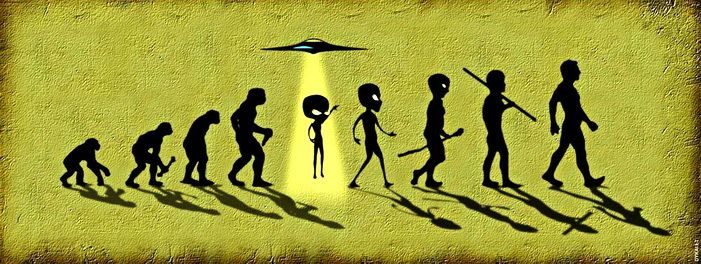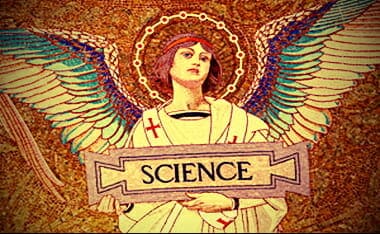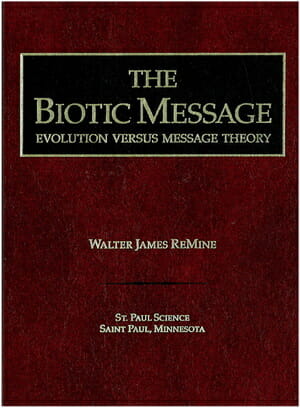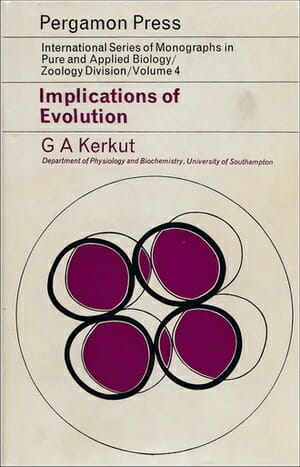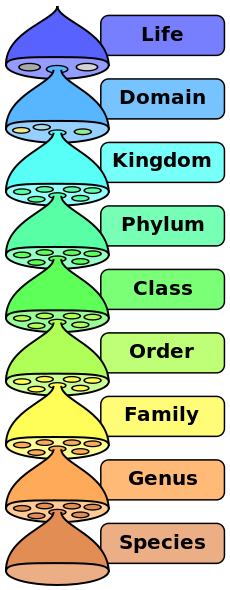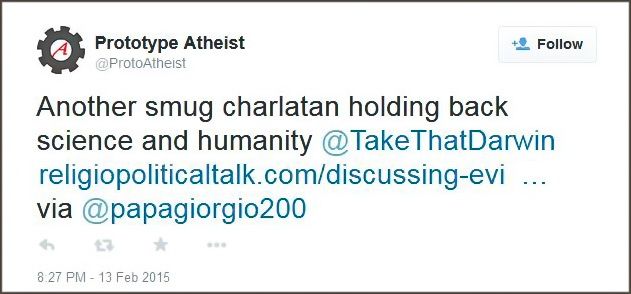- The FIRST QUOTE is Carl Henry (a Christian) quoting Dr. Kerkut’s book (an evolutionist). The SECOND QUOTE [jump to] is the raw, long excerpted quote from G.A. Kerkut.
What I am going to do is post a quote from one of Carl F. H. Henry’s books, then follow that quote up a larger quote from his source he uses. Context is king and I love Dr. Henry’s source A LOT!
The numbers from Dr. Henry’s quote correspond to the same numbers in Kerkut’s concluding chapter (to follow… jump to now instead by clicking here).
[p. 182>] A. Kerkut emphasizes that all seven basic assumptions on which evolutionary theory rests are “by their nature… not capable of experimental verification” (Implications of Evolution, p. 7). (1) The assumption that “nonliving things gave rise to living material… is still just an assumption” (ibid., p. 150). (2) The assumption that “biogenesis occurred only once… is a matter of belief rather than proof” (op. cit.). (3) The assumption that “Viruses, Bacteria, Protozoa and the higher animals were all interrelated” biologically as an evolutionary phenomenon lacks definite evidence (ibid., p. 151). (4) The assumption that “the Protozoa gave rise to the Metazoa” has no basis in definite knowledge (ibid., pp. 151 ff.). (5) The assumption that “the various invertebrate phyla are interrelated” depends on “tenuous and circumstantial” evidence and not on evidence that allows “a verdict of definite relationships” (ibid., pp. 152 f.). (6) The assumption that “the invertebrates gave rise to the vertebrates” turns on evidence gained by prior belief (ibid., p. 153). Although he finds “somewhat stronger ground” for assuming that “fish, amphibia, reptiles, birds and mammals are interrelated,” (7) Kerkut concedes that many key fossil transitions are “not well documented and we have as yet to obtain a satisfactory objective method of dating the fossils” (ibid., p. 153). “In effect, much of the evolution of the major groups of animals has to be taken on trust” (ibid., p. 154); “there are many discrete groups of animals and… we do not know how they have evolved nor how they are interrelated” (ibid., p. vii). In short, the theory that “all the living forms in the world have arisen from a single source which itself came from an inorganic form,” says Kerkut, has insufficiently strong evidential supports “to consider it as anything more than a working hypothesis” (ibid., p. 157). He thinks “premature and not satisfactorily supported by present-day evidence,” therefore, “the attempt to explain all living forms in terms of an evolution from a unique source,” that is, from a common ancestor (ibid., pp. vii f.)
[p. 183>] It is therefore understandable why commentators speak more and more of a crisis of evolutionary theory. Establishment science’s long regnant view that gradual development accounts for the solar system, earth, life and all else is in serious dispute. Not in many decades has so much doubt emerged among scientists about the so-called irrefutable evidence that evolution is what accounts for life on planet earth. Although it was still taught long thereafter in high schools, Ernst Haeckel’s “biogenetic law” that “ontogeny recapitulates phylogeny” had collapsed already in the late 1920s. The absence in recent texts of evolutionary charts depicting the common descent even of trees from a single form is noteworthy. Darwin’s insistence that nature makes no leaps, and that natural selection and chance adequately account for change in species, has lost credibility. Paleontologists and biologists are at odds over the significance of the fossil record, while gradualists and episodists disagree over the supposed tempo of evolution or whether the origin of species is consistent with microevolution or only with sudden gaps in the forms of life.
Gould, for example, opts for natural selection and, remarkably, combines it with saltation. He grants that “the fossil record does not support” the belief “in slow evolutionary change preached by most paleontologists” (and projected by Darwin); instead, “mass extinction and abrupt origination reign.. . . Gradualism is not exclusively valid (in fact, I regard it as rather rare). Natural selection contains no statement about rates. It can encompass rapid (geologically instantaneous) change by speciation in small populations as well as the conventional and immeasurably slow transformation of entire lineages” (Ever Since Darwin, p. 271). Natural selection here becomes an elastic phrase that can accommodate to everything while requiring no significant empirical attestation.
University of Glasgow scientists Chris Darnbrough, John Goddard and William S. Stevely indicate problem areas that beset evolutionary theory: “The experiments demonstrating the formation of a variety of organic molecules from presumptive prebiotic soups,” they write, “fall far short of providing a pathway for chemical evolution. Again, it is self-evident that the fossil record leaves much to be desired and few biologists recognize the dependence of the geological column on radiometric dating methods based on questionable assumptions about initial conditions. The whole history of evolutionary thought is littered with the debris of dubious assumptions and misinterpretations, especially in the area of fossil ‘hominids.’ To come up to date, protein and DNA sequence data, generally viewed as consistent with an evolutionary explanation of diversity, are invariably interpreted using methods which presuppose, but do not demonstrate evolutionary relationships, and which use criteria that are essentially functional and teleological. Finally, there is a collection of isolated fragmentary pieces of evidence which are usually dismissed as anecdotal because they are irreconcilable with the evolutionary model” (“American Creation” [correspondence], by Chris Darnbrough, John Goddard and William S. Stevely, Nature, pp. 95 f.).
From ongoing conflicts and readjustments it is apparent that there never [p. 184>] was nor is there now only one theory of evolution. Many nontheistic scholars, to be sure, insist that evolution is and has always been “a fact.” Laurie R. Godfrey affirms that “there is actually widespread agreement in scientific circles that the evidence overwhelmingly supports evolutionism” and quotes Gould as saying that “none of the current controversy within evolutionary theory should give any comfort, not the slightest iota, to any creationists” (“The Flood of Antievolution,” pp. 5-10, p. 10). If, as Godfrey insists, even the most sweeping revisions and reversals of scientific theory ought to be viewed not as weaknesses in evolutionary claims but rather as reflections of ongoing differences that inhere in “doing science—posing, testing and debating alternative explanations,” then the emphasis is proper only if Godfrey refuses to attach finality and a universal validity-claim to anticreationist evolutionary theses.
The history of evolutionary theory is far from complete and its present status ambiguous. Hampton L. Carson notes the difficulty of integrating the dual lines of study pursued by biological evolutionists when on the one hand they project the course of evolution that is held to produce contemporary organisms, and when on the other they analyze supposed evolutionary causation. Carson notes, moreover, that presentation of new approaches even to student audiences now requires an understanding of sophisticated computer techniques and an awareness of complex and sometimes esoteric theory; he ventures the bold observation that “new mutations and recombinations” of evolutionary theory will themselves “be subject to natural selection” (“Introduction to a Pivotal Subject” [review of Evolution by Theodosius Dobzhansky and others, and of Organismic Evolution by Verne Grant], pp. 1272 f.).
Yet most secular evolutionists continue to assume that evolution is a complex fact and therefore debate only its mechanism. Appealing to consensus rather than to demonstrative data, G. G. Simpson states that “no evolutionist since [Darwin has] seriously questioned that man did originate by evolution”; he insists, moreover, that “the problem [the origin of life] can be attacked scientifically” (“The World into Which Darwin Led Us.” pp. 966-974). Simpson’s advance confidence in naturalistic explanation exudes a strong bias against theistic premises.
But Thomas S. Kuhn considers the physical sciences to be grounded less on empirical facts that on academically defined assumptions about the nature of the universe, assumptions that are unprovable, questionable and reversible (The Structure of Scientific Revolutions). His approach differs somewhat from Michael Polanyi’s assault on the objectivity of human knowledge (Personal Knowledge: Towards a Post-Critical Philosophy), a view that Christian theism disputes on its own ground. Yet both Kuhn’s emphasis and Polanyi’s tend to put a question mark after absolutist evolutionary claims.
Carl F. H. Henry, God, Revelation and Authority, Vol VI: God Who Stands and Stays (Wheaton, IL: Crossway Books, 1983), 182-184.
Here is the extended quote from Dr. Henry’s source used,
G.A. Kerkut’s Implications of Evolution (pp. 150-157):
[p. 150>] WHAT conclusions, then, can one come to concerning the validity of the various implications of the theory of evolution? If we go back to our initial assumptions it will be seen that the evidence is still lacking for most of them.
(1) The first assumption was that non-living things gave rise to living material. This is still just an assumption. It is conceivable that living material might have suddenly appeared on this world in some peculiar manner, say from another planet, but this then raises the question, “Where did life originate on that planet?” We could say that life has always existed, but such an explanation is not a very satisfactory one. Instead, the explanation that nonliving things could have given rise to complex systems having the properties of living things is generally more acceptable to most scientists. There is, however, little evidence in favour of biogenesis and as yet we have no indication that it can be performed. There are many schemes by which biogenesis could have occurred but these are still suggestive schemes and nothing more. They may indicate experiments that can be performed, but they tell us nothing about what actually happened some 1,000 million years ago. It is therefore a matter of faith on the part of the biologist that biogenesis did occur and he can choose whatever method of biogenesis happens to suit him personally; the evidence for what did happen is not available.
(2) The second assumption was that biogenesis occurred only once. This again is a matter for belief rather than proof. It is convenient to believe that all living systems have the same fundamental chemical processes at work within them, but as has already been mentioned, only a few representatives from the wide range of living forms have so far been examined and even [p. 151>] these have not been exhaustively analysed. From our limited experience it is clear that the biochemical systems within protoplasm are not uniform, i.e. there is no established biochemical unity. Thus we are aware that there are systems other than the Embden—Meyerhof and the tricarboxylic cycles for the systematic degradation of carbohydrates; a total of six alternative methods being currently available. High-energy compounds other than those of phosphorus have been described; the number of vital amino-acids has gone up from twenty to over seventy; all these facts indicate that the biochemical systems may be very variable. The morphological systems in protoplasm, too, show considerable variation. It is possible that some aspects of cell structure such as the mitochondria and the microsomes might have arisen independently on several distinct occasions. It is also probable that two or more independent systems have evolved for the separation of chromosomes during cell division.
It is a convenient assumption that life arose only once and that all present-day living things are derived from this unique experience, but because a theory is convenient or simple it does not mean that it is necessarily correct. If the simplest theory was always correct we should still be with the four basic elements—earth, air, fire and water! The simplest explanation is not always the right one even in biology.
(3) The third assumption was that Viruses, Bacteria, Protozoa and the higher animals were all interrelated. It seems from the available evidence that Viruses and Bacteria are complex groups both of which contain a wide range of morphological and physiological forms. Both groups could have been formed from diverse sources so that the Viruses and Bacteria would then be an assembly of forms that contain both primitive and secondarily simplified units. They would each correspond to a Grade rather than a Subkingdom or Phylum. We have as yet no definite evidence about the way in which the Viruses, Bacteria or Protozoa are interrelated.
(4) The fourth assumption was that the Protozoa gave rise to the Metazoa. This is an interesting assumption and various schemes have been proposed to show just how the change could have taken place. On the other hand equally interesting schemes have been suggested to show the way in which the Metaphyta [p. 152>] could have given rise to both the Protozoa and the Metazoa. Here again nothing definite is known. We can believe that any one of these views is better than any other according to the relative importance that we accord to the various pieces of evidence.
(5) The fifth assumption was that the various invertebrate phyla are interrelated. If biogenesis occurred many times in the past and the Metazoa developed on several finite occasions then we might expect to find various isolated groups of invertebrates. If on the other hand biogenesis was a unique occurrence it should not be too difficult to show some relationship between all the various invertebrate phyla.
It should be remembered, for example, that though there are similarities between the cleavage patterns of the eggs of various invertebrates these might only reflect the action of physical laws acting on a restrained fluid system such as we see in the growth of soap bubbles and not necessarily indicate any fundamental phylogenetic relationship .
As has already been described, it is difficult to tell which are the most primitive from amongst the Porifera, Mesozoa, Coelenterata, Ctenophora or Platyhelminthia and it is not possible to decide the precise interrelationship of these groups. The higher invertebrates are equally difficult to relate. Though the concept of the Protostomia and the Deuterostomia is a useful one, the basic evidence that separates these two groups is not as clear cut as might be desired. Furthermore there are various groups such as the Brachiopoda, Chaetognatha, Ectoprocta and Phoronidea that have properties that lie between the Protostomia and the Deuterostomia. It is worth paying serious attention to the concept that the invertebrates are polyphyletic, there being more than one line coming up to the primitive metazoan condition. It is extremely likely that the Porifera are on one such side line and it is conceivable that there could have been others which have since died away leaving their progeny isolated; in this way one could explain the position of the nematodes. The number of ways of achieving a specific form or habit is limited and resemblances may be due to the course of convergence over the period of many millions of years. The evidence, then, for the affinities of the majority of the invertebrates is tenuous and circumstantial; not [p. 153>] the type of evidence that would allow one to form a verdict of definite relationships.
(6) The sixth assumption, that the invertebrates gave rise to the vertebrates, has not been discussed in this book. There are several good reviews on this subject. Thus Neal and Rand (1939) provide a useful and interesting account of the various views that have been suggested to explain the relationship between the invertebrates and the vertebrates. The vertebrates have been derived from the annelids, arthropods, nemerteans, hemichordates and the urochordates. More recently Berrill (1955) has given a detailed account of the mode of origin of the vertebrates from the urochord-ates in which the sessile ascidian is considered the basic form. On the other hand, almost as good a case can be made to show that the ascidian tadpole is the basic form and that it gave rise to the sessile ascidian on the one hand and the chordates on the other. Here again it is a matter of belief which way the evidence happens to point. As Berrill states, “in a sense this account is science fiction.”
(7) We are on somewhat stronger ground with the seventh assumption that the fish, amphibia, reptiles, birds and mammals are interrelated. There is the fossil evidence to help us here, though many of the key transitions are not well documented and we have as yet to obtain a satisfactory objective method of dating the fossils. The dating is of the utmost importance, for until we find a reliable method of dating the fossils we shall not be able to tell if the first amphibians arose after the first choanichthian or whether the first reptile arose from the first amphibian. The evidence that we have at present is insufficient to allow us to decide the answer to these problems.
One thing that does seem reasonably clear is that many of the groups such as the Amphibia (Save Soderberg 1934), Reptilia (Goodrich 1916) and Mammalia appear to be polyphyletic grades of organisation. Even within the mammals there is the suggestion that some of the orders might be polyphyletic. Thus Kleinenberg (1959) has suggested that the Cetacea are diphyletic, the Odontoceti and the Mysticeti being derived from separate terrestrial stocks. (Other groups that appear to be polyphyletic are the Viruses, Bacteria, Protozoa, Arthropoda (Tiegs and Manton 1958), and it is possible that close study will show that the Annelida and Protochordata are grades too.)
[p. 154>] In effect, much of the evolution of the major groups of animals has to be taken on trust. There is a certain amount of circumstantial evidence but much of it can be argued either way. Where, then, can we find more definite evidence for evolution? Such evidence will be found in the study of modern living forms. It will be remembered that Darwin called his book The Origin of Species not The Origin of Phyla and it is in the origin and study of the species that we find the most definite evidence for the evolution and changing of form. Thus to take a specific example, the Herring Gull, Larus argentatus, does not interbreed with the Lesser Black-backed Gull, Larus fuscus, in Western Europe, the two being separate species. But if we trace L. argentatus across the northern hemisphere through North America, Eastern Siberia and Western Siberia we find that in Western Siberia there is a form of L. argentatus that will interbreed with L. fuscus. We have here an example of a ring species in which the members at the ends of the ring will not interbreed whilst those in the middle can. The separation of what was possibly one species has been going on for some time (in this case it is suggested since the Ice Age). We have of course to decide that this is a case of one species splitting into two and not of two species merging into one, but this decision is aided by the study of other examples such as those of small mammals isolated on islands, or the development of melanic forms in moths. Details of the various types of speciation can be found in the books by Mayr, Systematics and the Origin of Species (1942), and Dobzhansky, Genetics and the Origin of Species (1951).
It might be suggested that if it is possible to show that the present-day forms are changing and the evolution is occurring at this level, why can’t one extrapolate and say that this in effect has led to the changes we have seen right from the Viruses to the Mammals? Of course one can say that the small observable changes in modern species may be the sort of thing that lead to all the major changes, but what right have we to make such an extrapolation? We may feel that this is the answer to the problem, but is it a satisfactory answer? A blind acceptance of such a view may in fact be the closing of our eyes to as yet undiscovered factors which may remain undiscovered for many years if we believe that the answer has already been found.
[p. 155>] It seems at times as if many of our modern writers on evolution have had their views by some sort of revelation and they base their opinions on the evolution of life, from the simplest form to the complex, entirely on the nature of specific and intra-specific evolution. It is possible that this type of evolution can explain many of the present-day phenomena, but it is possible and indeed probable that many as yet unknown systems remain to be discovered and it is premature, not to say arrogant, on our part if we make any dogmatic assertion as to the mode of evolution of the major branches of the animal kingdom.
Perhaps it is appropriate here to quote a remark made by D’Arcy Thompson in his book On Growth and Form. “If a tiny foraminiferan shell, a Lagena for instance, be found living today, and a shell indistinguishable from it to the eye be found fossil in the Chalk or some still more remote geological formation, the assumption is deemed legitimate that the species has ‘survived’ and has handed down its minute specific character or characters from generation to generation unchanged for untold millions of years. If the ancient forms be like rather than identical with the recent, we still assume an unbroken descent, accompanied by hereditary transmission of common characters and progressive variations. And if two identical forms be discovered at the ends of the earth, still (with slight reservation on the score of possible ‘homoplasy’) we build a hypothesis on this fact of identity, taking it for granted that the two appertain to a common stock, whose dispersal in space must somehow be accounted for, its route traced, its epoch determined and its causes discussed or discovered. In short, the Naturalist admits no exception to the rule that a natural classification can only be a genealogical one, nor ever doubts that ‘ ‘the fact that we are able to classify organisms at all in accordance with the structural characteristics which they present is due to their being related by descent.'”
What alternative system can we use if we are not to assume that all animals can be arranged in a genealogical manner? The alternative is to indicate that there are many gaps and failures in our present system and that we must realise their existence. It may be distressing for some readers to discover that so much in zoology is open to doubt, but this in effect indicates the vast amount of work that remains to be done. In many courses the [p. 156>] student is obliged to read, assimilate and remember a vast amount of factual information on the quite false assumption that knowledge is the accumulation of facts. There seems so much to be learnt that the only consolation the student has is that those who come after him will have even more to learn, for more will be known. But this is not really so; much of what we learn today are only half truths or less and the students of tomorrow will not be bothered by many of the phlogistons that now torment our brains.
It is in the interpretation and understanding of the factual information and not the factual information itself that the true interest lies. Information must precede interpretation, and it is often difficult to see the factual data in perspective. If one reads an account of the history of biology such as that presented by Nordenskiold (1920) or Singer (1950) it sometimes appears that our predecessors had a much easier task to discover things than we do today. All that they had to do was realise, say, that oxygen was necessary for respiration, or that bacteria could cause septicaemia or that the pancreas was a ductless gland that secreted insulin. The ideas were simple; they just required the thought and the experimental evidence! Let us have no doubt in our minds that in twenty years or so time we shall look back on many of today’s problems and make similar observations. Everything will seem simple and straightforward once it has been explained. Why then cannot we see some of these solutions now? There are many partial answers to this question. One is that often an incorrect idea or fact is accepted and takes the place of the correct one. An incorrect view can in this way successfully displace the correct view for many years and it requires very careful analysis and much experimental data to overthrow an accepted but incorrect theory. Most students become acquainted with many of the current concepts in biology whilst still at school and at an age when most people are, on the whole, uncritical. Then when they come to study the subject in more detail, they have in their minds several half truths and misconceptions which tend to prevent them from coming to a fresh appraisal of the situation. In addition, with a uniform pattern of education most students tend to have the same sort of educational background and so in conversation and discussion they accept common fallacies and agree on matters based on these fallacies.
[p. 157>] It would seem a good principle to encourage the study of “scientific heresies.” There is always the danger that a reader might be seduced by one of these heresies but the danger is neither as great nor as serious as the danger of having scientists brought up in a type of mental strait-jacket or of taking them so quickly through a subject that they have no time to analyse and digest the material they have “studied.” A careful perusal of the heresies will also indicate the facts in favour of the currently accepted doctrines, and if the evidence against a theory is overwhelming and if there is no other satisfactory theory to take its place we shall just have to say that we do not yet know the answer.
There is a theory which states that many living animals can be observed over the course of time to undergo changes so that new species are formed. This can be called the “Special Theory of Evolution” and can be demonstrated in certain cases by experiments. On the other hand there is the theory that all the living forms in the world have arisen from a single source which itself came from an inorganic form. This theory can be called the “General Theory of Evolution” and the evidence that supports it is not sufficiently strong to allow us to consider it as anything more than a working hypothesis. It is not clear whether the changes that bring about speciation are of the same nature as those that brought about the development of new phyla. The answer will be found by future experimental work and not by dogmatic assertions that the General Theory of Evolution must be correct because there is nothing else that will satisfactorily take its place.
G.A. Kerkut, Implication of Evolution (International series of monographs on pure and applied biology. Division: Zoology) (New York, NY: Pergamon Press, 1960), 150-157.

